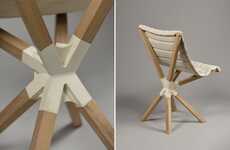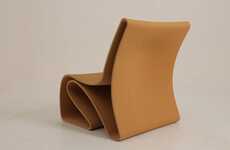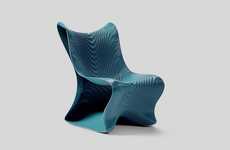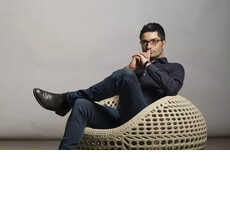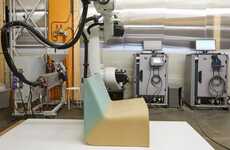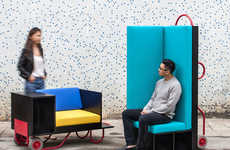
Bartlett's Design Computation Lab Created the Voxel Chair
Joey Haar — May 17, 2017 — Art & Design
References: designcomputationlab.org & dezeen
The Bartlett School of Architecture's Design Computation Lab (the DCL) recently created a new 3D-printed chair called the 'Voxel.' Named after volumetric pixels that have become the design standard in animation, the DCL's Voxel chair brings that digital concept into the physical world with the help of extrusion.
What separates Voxel's 3D printing technique from others is that it uses a single, continuous strand of material. Generally, 3D printing involves building objects up layer by layer. Thanks to new software designed by the DCL, the Voxel chair can be 3D-printed without having to separate the polymer strand at any point. The end result is an airy, latticed structure that is both modern and comfortable.
The Voxel chair is inspired by the famous Verner Panton chair, and it expands off of a previous project they worked on called the CurVoxel.
What separates Voxel's 3D printing technique from others is that it uses a single, continuous strand of material. Generally, 3D printing involves building objects up layer by layer. Thanks to new software designed by the DCL, the Voxel chair can be 3D-printed without having to separate the polymer strand at any point. The end result is an airy, latticed structure that is both modern and comfortable.
The Voxel chair is inspired by the famous Verner Panton chair, and it expands off of a previous project they worked on called the CurVoxel.
Trend Themes
1. Continuous Strand 3D Printing - The use of a single, continuous strand of material in 3D printing opens up opportunities for faster and more efficient manufacturing processes.
2. Volumetric Design - The incorporation of volumetric pixels in physical design allows for the creation of unique and intricate structures that blend digital concepts with real-world applications.
3. Lattice Structures - The use of lattice structures in furniture design provides a balance between modern aesthetic appeal and comfort, disrupting traditional design norms.
Industry Implications
1. 3D Printing - The advancements in continuous strand 3D printing technology offer opportunities for manufacturers to streamline production processes and create innovative products with increased efficiency.
2. Furniture Design - The adoption of volumetric design and lattice structures in furniture design presents an opportunity for the industry to explore new forms and aesthetics that challenge traditional norms.
3. Architecture - The integration of volumetric design concepts in architectural projects allows architects to push the boundaries of creativity and create unique, visually captivating structures with functional applications.
2.1
Score
Popularity
Activity
Freshness

